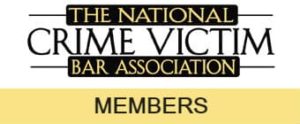
Hi - I'm Guy. I am an attorney that practices in Pennsylvania. I am a former sex crimes prosecutor and my day-to-day cases are almost exclusively helping survivors of sexual abuse get justice. My team and I are ready to help.
Get to know the city of Johnstown through this informative article presented by the abuse law firm of Johnstown. Learn more about the history of the area.
Johnstown is the principal city of the Johnstown, Pennsylvania, Metropolitan Statistical Area. Located in Cambria County, it is also included in the Johnston-Somerset, PA Combined Statistical Area. The city was first settled in 1770; however, it wasn't until 1791 when a settlement was established by Swiss German immigrant Joseph Jahns. In 1800, Johnstown was platted as Conemaugh Old Town. The community was incorporated as the Conemaugh borough on January 12, 1831. On April 14, 1834, it was renamed Johnstown. The town acted as a port and key transfer point on the Pennsylvania Main Line Canal between 1834 and 1854. In 1842, Charles Dickens visited Johnstown via the canal.
After the development of the Pennsylvania Railroad, the use of canals became obsolete. The town continued to grow as it was a stop on the railroad's mainline. Iron, steel and coal became central to the town. In 1860, the Cambria Iron Company located in Johnstown was the leading steel producer in the U.S.
However, the steel town was hit with tragedy on May 30, 1889. As it began raining in the valley, a dam holding an artificial lake in the mountains northeast of the town gave way. Flooding Johnstown with around 20 million tons of water, churches, homes, saloons, a railroad station, a library, a roller rink and two opera houses were buried under mud and debris. At least 2,209 people died in the disaster. At the same time, the old stone Pennsylvania Railroad bridge also caught on fire. Because of the Johnstown flood of 1889, the American Red Cross was established as the pre-eminent emergency relief organization in the U.S.
Nonetheless, this didn't stop the town from growing and prospering. On April 7, 1890, Johnstown was incorporated as a city after the merger of six surrounding boroughs. The city experienced another flood on St. Patrick's Day in 1936. This led the citizens of Johnstown to write to President Franklin Roosevelt in hopes of convincing him for federal aid. In August 1938, the U.S. Army Corps of Engineers set out to gouge, widen, deepen and realign 9.2 miles of the river channel in the city for the next five years. Now a "flood-free" city, residents in the area began to encouraged friends and families to bring new businesses to the area. Professional ice hockey teams like the Johnstown Blue Birds and the Johnstown Jets found a home in the city in 1941 and 1950, respectively.
In 1977 another flood happened in the city. Although the top management of the Cambria plant (now Bethlehem Steel) decided to stay in Johnstown, most of the steel production in the city was abandoned by the early 1990s as domestic and foreign competition raised. As of the early 2000s, the city is located in the middle of the "Health Belt." It is now a regional medical, cultural, educational and communications center. In the 2010 census, Johnstown has a population of 20,978 people.
Read on: A Guide to Murrysville, Pennsylvania
The City of Johnstown is home to five national historic districts. This includes:
Situated within these historic districts are a number of properties that have been individually added to the National Register of Historic Places (NRHP). These are:
Another historical landmark in Johnstown is the Johnstown Stone Bridge. Located on Walnut Street, the seven-arch stone railroad bridge spans the Conemaugh River. Constructed from 1887 to 1888 by the Pennsylvania Railroad, it was the site of the three-day fire during the 1889 Johnstown Flood. Now owned by the Norfolk Southern Railway, this landmark is home to the Stone Bridge Lighting Project of the Johnstowntown Area Heritage Association (JAHA).
The $1.2 million lighting project was created in memory of Rep. John Murtha and was dedicated on September 24, 2011. Every evening the stone bridge is lit up for three hours with colorful programmable LED lights. The colors are chosen by the JAHA with inclusive, fun and meaningful in mind. Most of the color schemes often reflect holidays and special events; however, the association is happy to accept light requests and rentals. To enjoy the lighting show, visitors can check out the bridge's light time on the JAHA website. Depending on the seasons, it can vary slightly.
If you have been a victim of assault at the hands of a priest, call our Johnstown priest abuse lawyers to get the compensation and justice you deserve. We will help you take legal action against your offender and hold them responsible for the crime they've committed. Call now!


